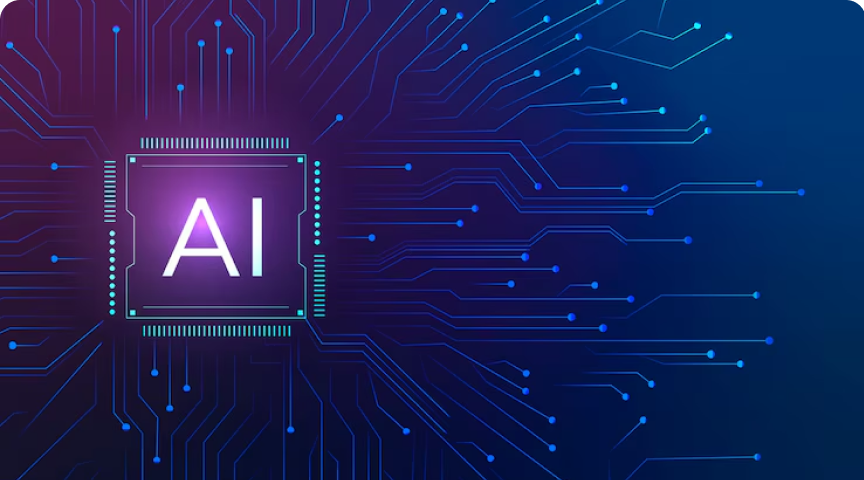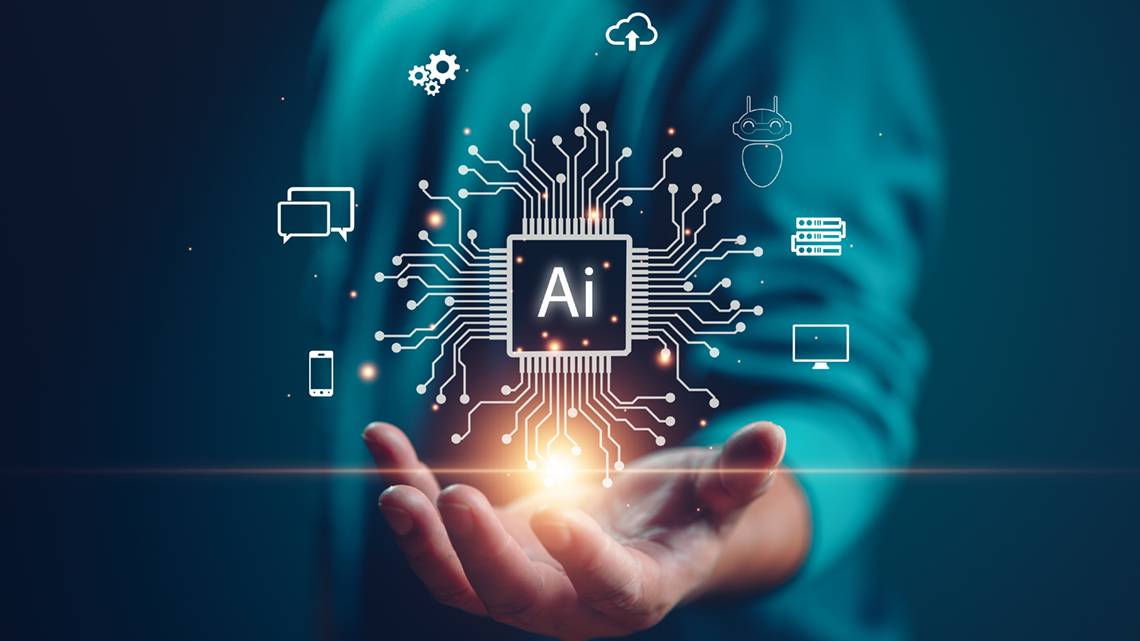
Hands-on, beginner-friendly lessons in Python programming and artificial intelligence .
Contact info
- Coconut Creek, Florida, USA
- support@empowerleadersai.com
Home – Blog



Artificial Intelligence isn’t some magical brain floating in the cloud—it’s just really good at spotting things we often overlook. While humans have instincts and emotions, AI has patterns, data, and tireless eyes. That combination makes it a bit of a superhero when it comes to catching the little stuff we usually miss, even with our strongest coffee in hand.
Let’s take a friendly deep dive into the secret super-vision of AI and how it spots what slips right past us.
Humans are great at thinking big, dreaming, and inventing cool stuff like tacos, cat memes, and video games. But when it comes to endless numbers, detailed patterns, or spotting a minor glitch in a massive spreadsheet, we’re not exactly top-tier. This is where AI shines like a flashlight in a dark closet.
AI doesn’t get bored or distracted. It can analyze thousands of data points in minutes, noticing things like a weird shopping trend or a small error in code. For example, it can tell if a customer usually shops on Tuesday nights but suddenly stops—that’s a pattern most people wouldn’t even think to check.
Humans might glance at a chart and see nothing strange, but AI might scream (quietly, in binary) that something’s off. This kind of pattern detection helps in everything from catching fraud to predicting if your pizza will arrive cold. Spoiler: it probably will.

Let’s be honest—humans miss stuff. We skip typos, overlook errors, and sometimes walk past our own car in a parking lot. AI, on the other hand, is basically built to spot the invisible.
Imagine you’re proofreading an article. You read it three times, but still miss that sneaky extra space or the word “teh” instead of “the.” AI tools like grammar checkers or code linters catch those little slips because they’re trained to laser-focus on the rules, not just the overall flow.
This super-vision goes way beyond spelling mistakes. In medical imaging, for instance, AI can detect tiny signs of disease that doctors might miss during a busy shift. It’s not replacing humans—it’s just giving them a robot sidekick that never gets tired or needs coffee breaks.
Even in cybersecurity, AI can catch a weird login at 2 a.m. from a location you’ve never been. That could be a hacker, or your cat accidentally walking on your keyboard. Either way, AI doesn’t miss it.
Humans get tired. We blink, we need snacks, and sometimes our brains just decide to zone out completely. AI doesn’t have those problems—it’s always “on.” That’s why it’s fantastic at noticing small changes over time.
For example, if you’re training a robot to tell the difference between a ripe banana and a not-so-ripe one, you might think it’s obvious. But what about 100 bananas? Or 10,000? AI can be trained to look at thousands of images and instantly pick out the smallest change in color, shape, or texture that indicates ripeness. And it doesn’t even need a snack afterward.
This is why AI is used in quality control in factories. While a human inspector might miss a slightly crooked label or a chip in a product, AI can catch those with laser accuracy every time. It’s like having a thousand eyes and none of them blink.

Let’s admit it: humans are distractible. A pop-up notification, a loud noise, or a cute puppy video can completely derail our focus. AI doesn’t get sidetracked. It keeps working, quietly and efficiently, even if there’s a puppy dancing right next to it.
This makes it incredibly valuable in high-stakes environments like air traffic control systems or stock trading platforms. While human workers need breaks (and rightly so!), AI can monitor nonstop for the tiniest sign of something unusual. A two-second delay in a system? AI flags it. A small change in financial data? AI highlights it before your second sip of coffee.
So while we get the joy of laughing at memes and daydreaming about lunch, AI keeps its digital eyes wide open on the task at hand.
While AI sees things we might miss, it doesn’t mean it’s better than humans. It’s just different. Think of AI as the ultimate sidekick—like Batman and Robin, but with more spreadsheets and fewer capes.
By working together, humans bring creativity, intuition, and empathy, while AI brings precision, endurance, and an ability to analyze like a pro. It’s not about man versus machine—it’s about man and machine spotting more together than either could alone.
So the next time you miss a typo or overlook a tiny detail, don’t feel bad—just know that your robot friend has your back (as long as you remembered to charge it).

Remember the good old days when you had to wait a week just to hear back on something you submitted? Whether it was a school essay, a job application, or a design project, the waiting game was real. And let’s be honest—refreshing your email a hundred times doesn’t make the reply come any faster.
But now, thanks to AI and clever tech tools, instant feedback is becoming the new normal. Like sending a text and getting a reply before you even put your phone down. Pretty magical, right?
Let’s dive into how this shift is saving time, reducing stress, and maybe even rescuing us from the horror of unnecessary “follow-up” emails.
Let’s face it—waiting for feedback feels like watching paint dry, only with more anxiety. You hit “submit” and then wait. And wait. Then, maybe days later, you get a vague comment like “Looks good” or “Needs work.” That’s not helpful—it’s confusing and too late to fix anything easily.
With instant feedback tools powered by AI, the response happens almost immediately. Whether you’re writing an essay, building a website, or learning to code, you can see what’s working and what’s not right away. That means less wondering and more doing.
Think about how this changes learning: instead of turning in a paper and hearing back next week, you get real-time suggestions while you’re writing. Did you miss a point? Use too many passive verbs? The system tells you right there, not after you’ve already hit “submit” and moved on to the next topic.

Let’s face it—waiting for feedback feels like watching paint dry, only with more anxiety. You hit “submit” and then wait. And wait. Then, maybe days later, you get a vague comment like “Looks good” or “Needs work.” That’s not helpful—it’s confusing and too late to fix anything easily.
With instant feedback tools powered by AI, the response happens almost immediately. Whether you’re writing an essay, building a website, or learning to code, you can see what’s working and what’s not right away. That means less wondering and more doing.
Think about how this changes learning: instead of turning in a paper and hearing back next week, you get real-time suggestions while you’re writing. Did you miss a point? Use too many passive verbs? The system tells you right there, not after you’ve already hit “submit” and moved on to the next topic.
One of the worst parts of delayed feedback is the mental fog it creates. You don’t know if you did great or totally missed the mark, and that uncertainty eats at your confidence. But with immediate feedback, there’s no more wondering—you know what’s working and what needs tweaking.
That kind of clarity boosts confidence like nothing else. When students or professionals see suggestions pop up instantly, they feel more in control of their work. They’re not blindly guessing anymore; they’re actually understanding what’s going on and why something is right or wrong.
This is especially helpful in creative fields like writing, design, or coding. Creative people often second-guess themselves. Having a tool that says, “Yep, you nailed that!” or “Try this instead,” makes the process smoother, faster, and way more fun.

Instant feedback isn’t just about speed—it’s about momentum. When you’re in the flow of learning or building something cool, the last thing you want is to stop and wait around. That breaks your rhythm and makes it harder to get back on track later.
Quick, helpful responses keep you moving forward. Instead of getting stuck or spiraling into self-doubt, you make small changes and keep going. It’s like having Google Maps for your brain: turn left here, slow down there, reroute if needed, and keep heading toward your goal.
This applies to professionals too—not just students. Marketers, programmers, writers, and designers can all benefit from faster feedback loops. You don’t have to wait a week for the boss to say, “Let’s try a different font.” You get that input now, not three meetings later.
The beauty of instant feedback is that it puts power back into your hands. You’re not waiting on someone else’s schedule. You’re learning, improving, and adjusting right now, and that’s incredibly motivating. It turns the feedback process from something frustrating into something energizing.
It’s also way less awkward. No more, “Hey, just checking in—any update on my project?” You get your answers fast, fix what’s needed, and move on with your life. Plus, let’s be real: getting better faster just feels awesome.
So the next time you’re working on something and a helpful AI tool gives you tips in real-time, give it a little mental high five. It’s not magic—it’s just smarter, faster learning made possible by tech that doesn’t believe in unnecessary delays.
Best Practices for Reviewing with AI
Using AI to review your work is like having a super helpful assistant who never gets tired, moody, or distracted. But just like any powerful tool, it works best when you know how to use it wisely. AI won’t do all the thinking for you—but it can make reviewing faster, easier, and way less painful.
So if you’re ready to level up your reviewing game with a little digital help, here are some best practices that’ll help you get the most out of your AI sidekick.

Let’s start with this very important rule: AI isn’t always right. Shocking, I know. Just because it looks confident when it tells you to replace a word or change a sentence doesn’t mean it’s giving you perfect advice.
AI is good at spotting grammar issues, flagging unclear sentences, and catching sneaky typos. But it might not always understand your tone, your jokes, or your unique writing style. That’s why you still need to be the final judge. Use AI suggestions as helpful clues, not final decisions.
Ask yourself: “Does this change actually make my message better?” If the answer’s yes, go for it. If not, skip it and move on like the editing boss you are.
Many people wait until their work is done before bringing in AI to help with reviewing. That’s totally fine—but you’re actually missing a chance to catch issues earlier and save time in the long run.
Instead, try using AI tools throughout your process. For example, after writing a few paragraphs, run a quick review to catch awkward phrasing or repetitive words. It’s like brushing your teeth before your dentist appointment—things go way smoother later.
Early AI check-ins can help you spot weak spots while you’re still in the writing mindset. It’s much easier to tweak your work along the way than to overhaul everything after you’ve already mentally moved on.

Most AI tools aren’t just “one size fits all.” They let you customize what kind of feedback you want—grammar help, tone analysis, clarity checks, and more. Don’t be afraid to fine-tune the settings.
If you’re writing a casual blog post, maybe you don’t need perfect academic grammar rules. On the other hand, if you’re polishing a resume or research paper, you probably want extra sharp editing.
Think of AI like a smart waiter. If you just say “Bring me food,” you might get something weird. But if you say, “I’d like a spicy vegetarian dish with extra sauce,” you’ll probably get exactly what you want. Be specific with your feedback preferences, and AI will serve up way better results.
Most AI tools aren’t just “one size fits all.” They let you customize what kind of feedback you want—grammar help, tone analysis, clarity checks, and more. Don’t be afraid to fine-tune the settings.
If you’re writing a casual blog post, maybe you don’t need perfect academic grammar rules. On the other hand, if you’re polishing a resume or research paper, you probably want extra sharp editing.
Think of AI like a smart waiter. If you just say “Bring me food,” you might get something weird. But if you say, “I’d like a spicy vegetarian dish with extra sauce,” you’ll probably get exactly what you want. Be specific with your feedback preferences, and AI will serve up way better results.

Here’s a big tip: AI reviews are also a chance to learn, not just fix stuff. When AI points out a mistake, pause for a second. Ask yourself, “Why is this wrong?” or “Why does this suggestion improve clarity?”
Over time, these little moments turn into big learning wins. You’ll start writing cleaner drafts and needing fewer corrections. That’s the dream, right? Less fixing, more creating.
Instead of treating AI like a grammar janitor who just mops up your messes, think of it as a friendly coach who helps you grow your skills every time.
When used the right way, AI is like having a brilliant editing partner sitting beside you—one who never judges your typos. It’s fast, smart, and super helpful, but it still needs you in the driver’s seat to guide the tone, purpose, and final message.
So don’t be afraid to lean on AI for help, but also trust your gut, your creativity, and your personal flair. With both of you working together, your writing—and your confidence—can go to the next level.
And remember: the best reviews aren’t about making something perfect. They’re about making something better, step by step—and AI is here to help you do just that.

We’ve all had that moment—you set a goal, swear you’re going to stick with it, and then… forget it entirely. Whether it’s drinking more water, writing every day, or actually flossing your teeth like the dentist begged you to, habits can be hard to build.
That’s where smart suggestions powered by AI come in. No, they won’t follow you around with a clipboard, but they will offer timely nudges, helpful tips, and gentle reminders that turn good intentions into real habits—without the guilt trip.
Let’s take a look at how this works and why it’s a game-changer for forming habits that actually stick.
Most people don’t struggle with starting a habit—they struggle with remembering it. You’re pumped on day one, energized on day two, and by day four… you’re watching cat videos and totally forgot you were trying to journal.
Enter smart suggestions. These are clever little prompts from AI systems that know just when to chime in—not too early, not too late. They don’t nag; they nudge. You might get a message like, “Hey, you usually write around this time. Want to start now?” or “Looks like it’s been a while since your last coding session.”
These reminders work because they’re timely, personal, and gentle. They help you remember your goals without feeling like you’re being chased by a to-do list with legs.
And the more consistent those reminders are, the easier it is for your brain to turn the action into an automatic routine.

One of the best parts about smart suggestions is that they help you make small improvements that lead to big changes. You don’t have to completely overhaul your life overnight (unless you really want to).
Let’s say you’re trying to become a better writer. AI tools might suggest rewriting one sentence for clarity, or changing one word to make your tone friendlier. These tiny suggestions add up over time—before you know it, you’ve improved your writing without even realizing how much progress you’ve made.
Or maybe you’re learning a new language. Smart systems can track where you get stuck and suggest better practice exercises based on your weak spots. That way, you’re not wasting time reviewing stuff you already know—you’re targeting the areas that actually need work.
These mini-adjustments feel easy because they are easy. But repeated over time, they build strong habits that stick with you like glitter on craft paper.
One of the best parts about smart suggestions is that they help you make small improvements that lead to big changes. You don’t have to completely overhaul your life overnight (unless you really want to).
Let’s say you’re trying to become a better writer. AI tools might suggest rewriting one sentence for clarity, or changing one word to make your tone friendlier. These tiny suggestions add up over time—before you know it, you’ve improved your writing without even realizing how much progress you’ve made.
Or maybe you’re learning a new language. Smart systems can track where you get stuck and suggest better practice exercises based on your weak spots. That way, you’re not wasting time reviewing stuff you already know—you’re targeting the areas that actually need work.
These mini-adjustments feel easy because they are easy. But repeated over time, they build strong habits that stick with you like glitter on craft paper.

Building habits isn’t about perfection—it’s about progress. And having a system that supports your journey, rather than judges it, makes all the difference.
Smart suggestions are like digital cheerleaders with great timing. They catch you before you slip, help you adjust when needed, and keep the momentum going when you’re on a roll.
Whether you’re trying to read more books, write more code, or remember to stretch once in a while, smart AI tools are there to help you do it with less stress and more success.
And here’s the best part—you’re still in charge. AI just helps make the hard stuff easier, the forgettable stuff memorable, and the boring stuff kind of fun (well, almost).
If you’ve ever struggled with starting good habits or sticking to them longer than a week, you’re not alone. But now, with AI giving you smart, friendly, and totally doable suggestions, building better habits doesn’t have to feel like climbing a mountain barefoot.
It’s more like walking up a moving escalator that gives you snacks on the way. Smart, steady, and surprisingly enjoyable.
So go ahead—lean into those clever reminders, embrace the bite-sized improvements, and build habits the smart way. Your future self will thank you—and probably be way more hydrated too.


Create your account and unlock access to powerful tools, expert-led courses, and a supportive community. Whether you’re just starting or leveling up, everything you need is just a click away


Create your account and unlock access to powerful tools, expert-led courses, and a supportive community. Whether you’re just starting or leveling up, everything you need is just a click away


Hands-on, beginner-friendly lessons in Python programming and artificial intelligence .
Copyright © 2025 Empower AI LEADER